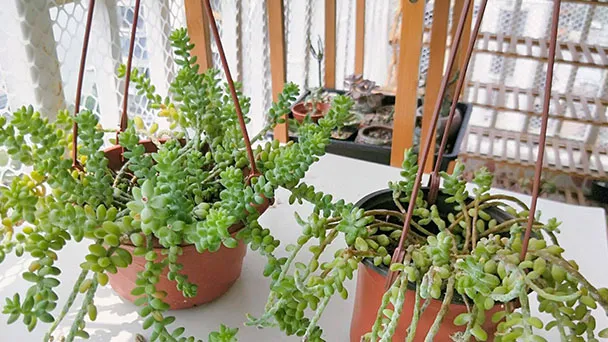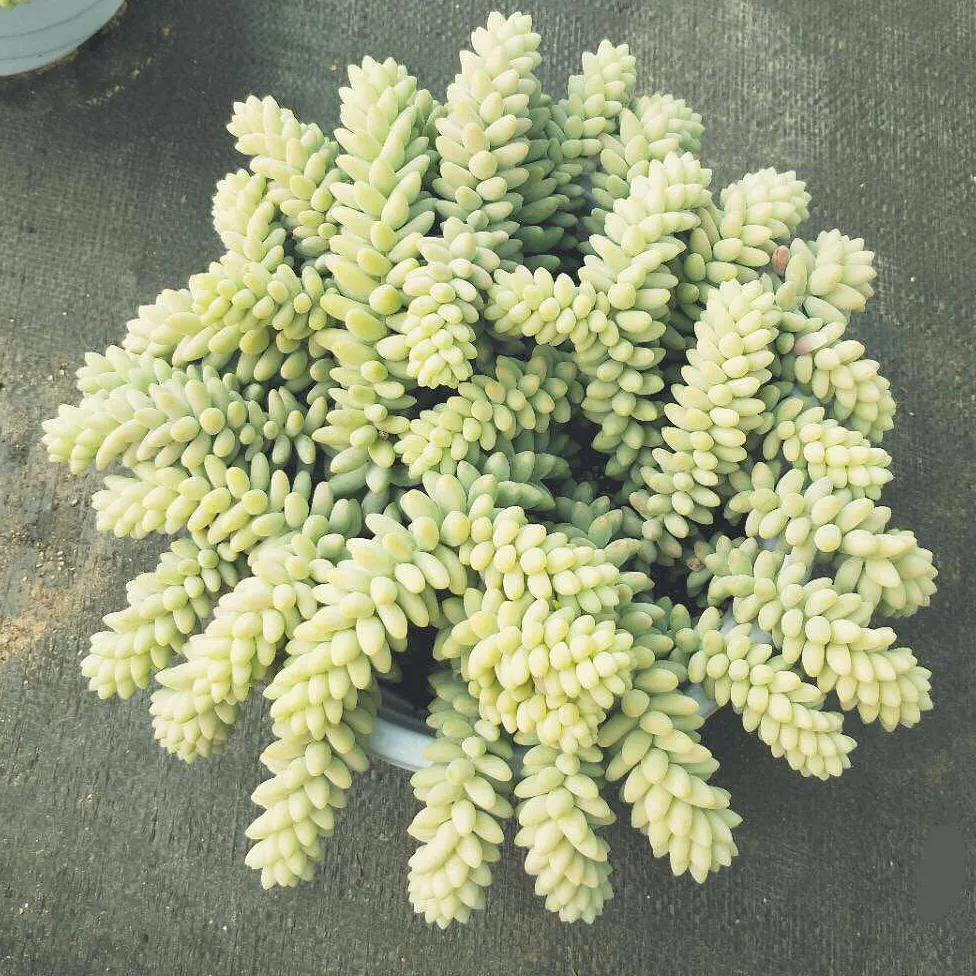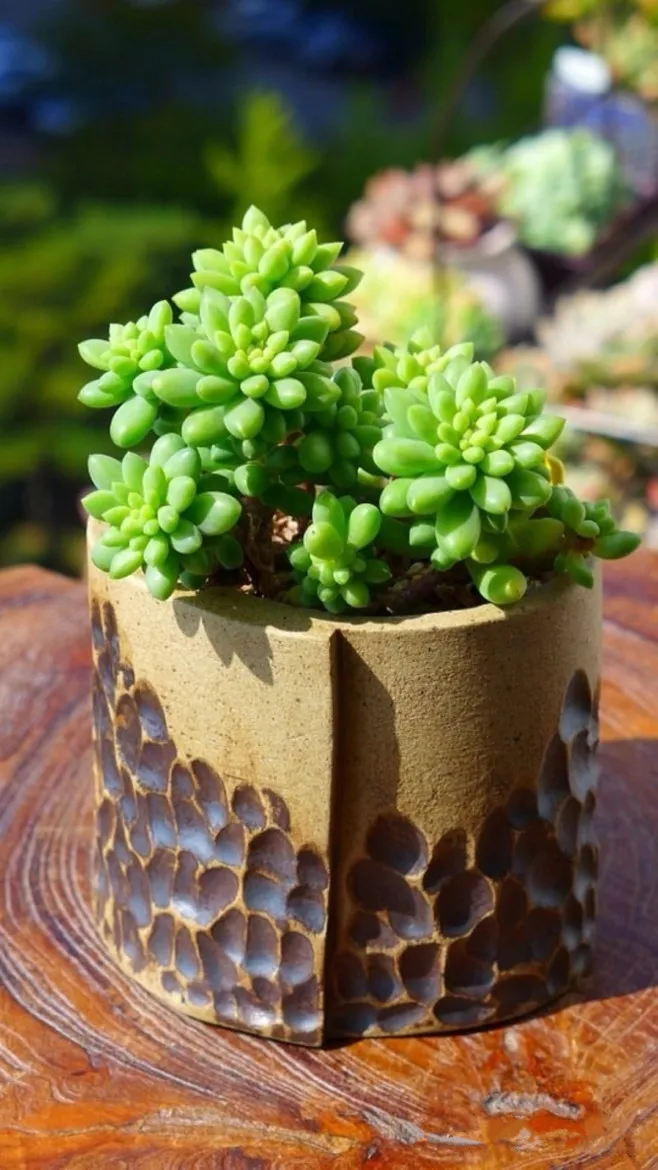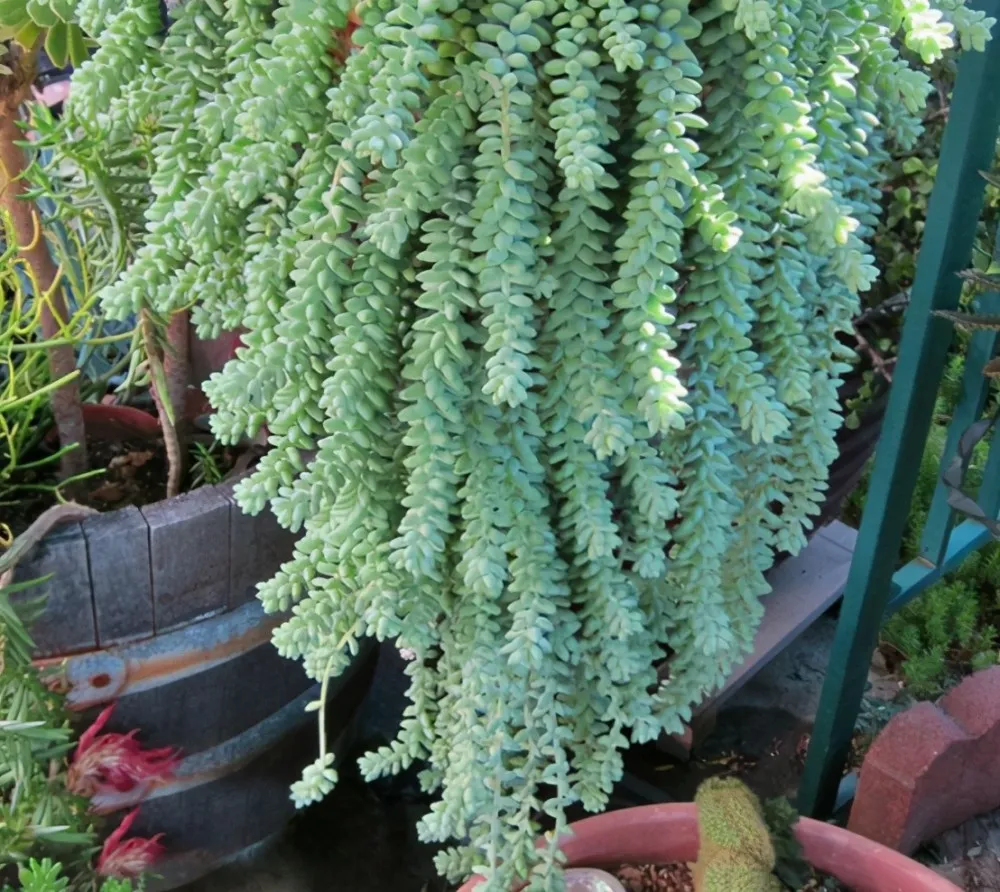Why My Burros Tail Leaves Falling Off
Written by Ivy
Dec 09 2022

One of the more common factors when it comes to Burro's Tail plants losing their leaves is consistent underwatering. Burro's Tail plant will lose its beauty if we do not take good care of it because the leaves will begin to fall off. Why then do the burro's tail leaves fall off so easily? Give it to me to explain. Said in very simple words (we'll elaborate on it in a second), when this fragile plant is disturbed by any means, the leaves will fall off the stem. Another cause is over or under-watering the plant. Luckily you can control most of these things, and now I will help you understand why, and also give you a fresh perspective on this phenomenon.
Causes of Burro's Tail Leaves Falling Off
 3
3Hard Soil
Burro's tail has high requirements for soil, so whether the soil is breathable and loose is particularly important for the healthy growth of burro's tail. If the soil is too hard and sticky, the roots will not be able to breathe. This caused burro's tail to lose its leaves. In view of the damage to burro's tail caused by too hard basin soil, we can prevent burro's Tail from falling leaves by reasonably matching the soil.Overwatering Or Underwatering
Burro's tail has strong drought tolerance. Many novices don't know burro's tail's habits. They often water too often or don't water at all, resulting in serious ponding or drought in burro's tail basin. Over time, burro's tail's roots will rot and leaves will fall off all the time.High Or Low Temperature
In summer, due to the light intensity and excessive heat absorption of the soil, burro's tail will enter the dormancy period. At this time, the leaves are easy to be burned, resulting in burro's tail leaves falling off; In winter, burro's tail is not cold resistant. If the temperature is too low, it will stop growing, and the leaves will even be frostbitten. In view of the damage caused by temperature change to burro's Tai, we should timely shade burro's tail in summer and put burro's tail in a warm room in winter, so as to reduce the probability of burro's tail falling leaves.Root Rot
Burro's tail is not only drought resistant, but also has low requirements for fertilizer. Usually, excessive fertilization will also lead to too fast growth of burro's tail, leading to rotten roots, and the leaves of burro's tail become too fragile, resulting in frequent leaf Falling.
What To Do With My Burro's Tail Leaves Falling Off?
Light
If burro's tail loses its leaves because of too strong light, we should transfer the Burro's Tail to the environment with scattered light for maintenance. However, although burro's tail is fleshy and likes sunshine very much, when the light is too strong, the leaves of burro's tail will be sunburned, which will lead to the loss of leaves all the time.Water
Burro's tail is a kind of meat with strong drought tolerance, so we must pay attention to the frequency and amount of watering each time to prevent burro's tail leaves falling off. Burro's tail usually goes into dormancy in winter and summer. At this time, there are few requirements for water. We should appropriately reduce the watering times, place it in a place with moderate temperature, and water it after the basin soil is dry. In spring and autumn, when the air is dry, the watering frequency of burro's tail should be slightly increased to prevent the leaves of burro's Tail from shrinking and falling because the basin soil is too dry.Soil
Burro's tail has been maintained for a long time. If we don't loosen the basin soil to burro's tail in time, it may cause poor root respiration due to soil hardening, so as to speed up the leaf loss of burro's tail. Therefore, when planting burro's tail, we should first choose sandy soil with good air permeability, and then pay attention to changing pots and soil over a long time, and trim the broken roots in time to ensure the continued healthy growth of burro's tail.
Fertilizer
Burro's tail cannot grow without nutrients. We need to add fertilizer regularly to maintain nutrients in the soil and prevent burro's tail leaves falling off. In spring and autumn, burro's tail grows vigorously, which is the best time for fertilization. In winter and summer, burro's tail grows slowly, so we should try not to fertilize as much as possible. Each fertilization should be quantitative, and it is OK to supplement fertilizer 1-2 times a month. If the phenomenon of rotten roots and leaves is found, it means that there is too much fertilization and the number of fertilization should be reduced. If we find that burro's tail leaves fall off due to small and yellowing leaves, it indicates that burro's tail is short of nutrition and needs to be fertilized. Pay attention to avoid leaves during fertilization to prevent burns.Read More:
- Why Are My Burro's Tail Shriveling?
- How Often To Water Burro's Tail
- How To Save My Overwatered Burro's Tail
- Why My Burro's Tail Leaves Falling Off
- How Much Light Does Burros Tail Need?
- Burro's Tail VS Donkey Tail
- How Do I Make My Burro's Tail Bloom?
- How To Save Underwatered Burro's Tail
FAQs
Burro's Tail Leaves Are Shriveling Up, What Should I Do?
Overwatering is one of the common causes of this. Falling leaves are common, as was previously stated. However, if it occurs more frequently and in greater quantities, there is probably a problem with the plant, and in this case, too much water is almost always to blame. Reducing the amount of water you give your plant will help you fix this. Reduce the frequency of watering as well to help the plant heal.
What is the Best Way to Propagate Burro's Tail?
Allowing the cutting to callus is crucial when propagating burro's tail. Sit the cutting in the ground to accomplish this. Do not bury it; keep it that way. The roots will start to emerge in a few weeks or months. Avoid over-misting the cutting at this point because it might produce new plants before the roots begin to emerge. You could also wait until the roots start to appear before misting those tiny developing plants. The baby Burro's Tail can then be lightly buried once the new roots have taken hold. Keep in mind that this plant prefers soil with rapid drainage. So avoid compacting the soil to promote the plant's healthy growth.
Latest Updated
- Benefits of Bugleweed - 7 Science-backed Health Benefits
- Bugleweed Dangers & Side Effects - Is It Poisonous?
- How to Plant Evergreen Trees - What You Should Know
- When to Plant Evergreens - Grow Guide for Evergreen Trees
- 12 Wonderful Evergreen Shrubs for Your Garden
- 12 Popular Evergreen Plants with Pictures for Beginners
- When And How To Prune A Lilac Bush Like a Pro
- How to Grow & Care for Lilac Vine (Hardenbergia Violacea)
- Japanese Lilac Tree (Syringa Reticulata) Care & Propagation Guide
- Shumard Oak Pros and Cons - What to Know
Popular Articles
- Winter maintenance of Antirrhinum Majus
- How to Grow Terminalia Mantaly Tree
- How to Grow and Care for Crossostephium Chinense
- How to grow Antirrhinum Majus in spring
- Peristeria Elata (Dove Orchid) Profile: Info & Care Guide
- Underwatered Snake Plant (Sansevieria Trifasciata) - Signs And How To Fix
- How to Care for Brazilian Jasmine Plant (Mandevilla Sanderi)
- How to Grow & Care for Graptopetalum Purple Delight in Summer
- Rosa Chinensis (China Rose): Plant Growing & Care Tips
- How to Care for Baby Sun Rose (Aptenia Cordifolia)